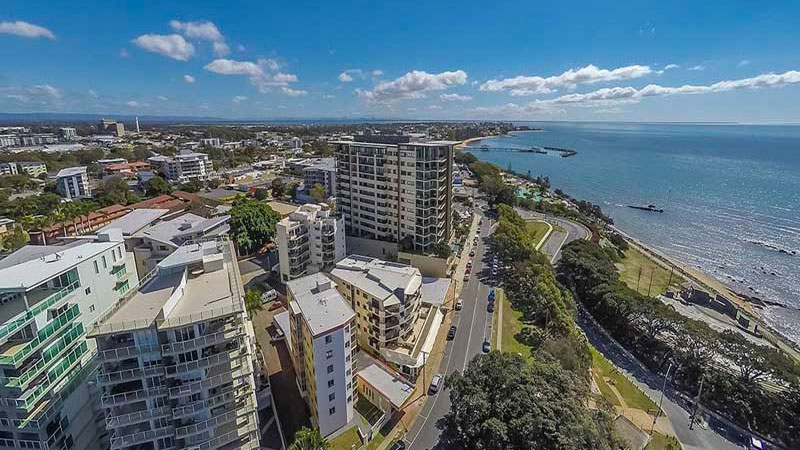Outer Sydney, Melbourne Hit Hardest by Covid Price Falls
House prices in outer Sydney and inner Melbourne have been most affected by weakening economic conditions associated with the pandemic, Corelogic's head of research Eliza Owen says.
Australia's largest cities have remained most exposed to the country's dramatic migration-driven gains over recent years with the cities geared around the expectation of up to 100,000 new arrivals each year.
According to Corelogic's latest findings, dwelling values across Melbourne's top-end, worth $959,500 or more, fell by 1.3 per cent over the month of May, compared with a 0.6 per cent decline across its middle market, and a 0.3 per cent decline in the lowest value quartile.
In Sydney, the same period saw a decline of of 0.6 per cent in the highest market segment worth $1.35 million or higher, a 0.4 per cent decline across the middle of the market, and a slight lift in the lowest value segment of 0.1 per cent.
“Over the past few months, dwelling market performance has varied by region, in both a cyclical and structural way,” Owen said.
“As per historic cycles, the most expensive parts of Sydney and Melbourne seem to be leading the current downswing.
“The more expensive parts of Sydney and Melbourne have higher levels of volatility, and typically the first to see price changes.”
Markets most impacted by Covid-19
| Capital City Region | Sa4 Region | Change in dwelling market values |
|---|---|---|
| Greater Perth | Mandurah | -2.2% |
| Greater Melbourne | Melbourne - Inner South | -2.2% |
| Greater Melbourne | Melbourne - Inner | -1.8% |
| Greater Melbourne | Melbourne - Inner East | -1.8% |
| Greater Perth | Perth - South East | -1.2% |
| Greater Melbourne | Melbourne - Outer East | -1.2% |
| Greater Brisbane | Ipswich | -0.8% |
| Greater Sydney | Sydney - North Sydney and Hornsby | -0.7% |
| Greater Sydney | Sydney - Inner West | -0.7% |
| Greater Sydney | Sydney - Northern Beaches | -0.7% |
| Greater Melbourne | Melbourne - North East | -0.6% |
| Greater Brisbane | Brisbane Inner City | -0.5% |
| Greater Melbourne | Mornington Peninsula | -0.5% |
| Greater Brisbane | Logan - Beaudesert | -0.5% |
| Greater Melbourne | Melbourne - South East | -0.4% |
| Greater Sydney | Sydney - Inner South West | -0.4% |
| Greater Sydney | Sydney - Baulkham Hills and Hawkesbury | -0.3% |
| Greater Perth | Perth - North West | -0.3% |
| Greater Brisbane | Moreton Bay - South | -0.3% |
| Greater Sydney | Sydney - Sutherland | -0.2% |
^ Ranked by change in values between 31st of March—31st of May. Source: Corelogic
It comes as the latest Corelogic Home Value Index showed house price growth retreating by 0.4 per cent over the month of May, with preliminary indicators for June revealing the rate of decline is gathering momentum.
The deceleration in the rate of growth since late-March, in-line with stringent lockdown measures, has since been stemmed through the federal government's hefty stimulus measures.
Capital growth trends remain contingent on how long it takes to contain the virus, which has flared up again in Melbourne, and whether additional constraints on business or personal activity are reintroduced.
The varying degrees of swing
Melbourne’s inner city and eastern suburbs have seen the largest decline across the metropolitan markets with Sydney's high-end market such as North Sydney, the Inner West and the Northern Beaches also feeling the impacts.
Malvern East, in the Melbourne metropolitan, has been the worst suburb-level performer between the end of March and the end of May across the capital cities, with total dwelling market values down -4.8 per cent.
Other steep value falls have been seen across the Melbourne suburbs include a drop of -3.8 per cent in Glen Iris, -3.5 per cent in Northcote and -3.2 per cent in Port Melbourne.
In Sydney, the North Shore harbourside suburb of Mosman saw the largest dwelling value decline, at 2.5 per cent.
Lane Cove North was a close runner-up, declining 2.4 per cent, while Manly fell by 2.3 per cent and Leichhardt by 1.7 per cent.

The largest decline in values over the last two months was placed in the Perth region of Mandurah, where values are now 38 per cent below their 2006 peak.
The renewed downwards pressure comes just after the Perth dwelling market were beginning to enjoy a long-awaited growth phase in the start of 2020.
Suburbs within the lower value quartile and “affordable” localities saw relatively strong monthly growth.
Sydney’s outer west and the Blue Mountains region reported an increase of 0.7 per cent in dwelling values, while Melbourne’s north west grew by 0.2 per cent.
The best performing area was Sydney’s Ryde, a family-orientated northern suburb, which saw dwelling values increase by 2.2 per cent.
“As the downturn progresses, we are likely to see continued declines in inner-city markets that had previously relied on international migration for new housing demand,” Owen said.
“However, as the wider economic downturn drags on housing demand, mild price declines are likely to spread, resulting in a more broad-based downturn in the next 12 months.”















